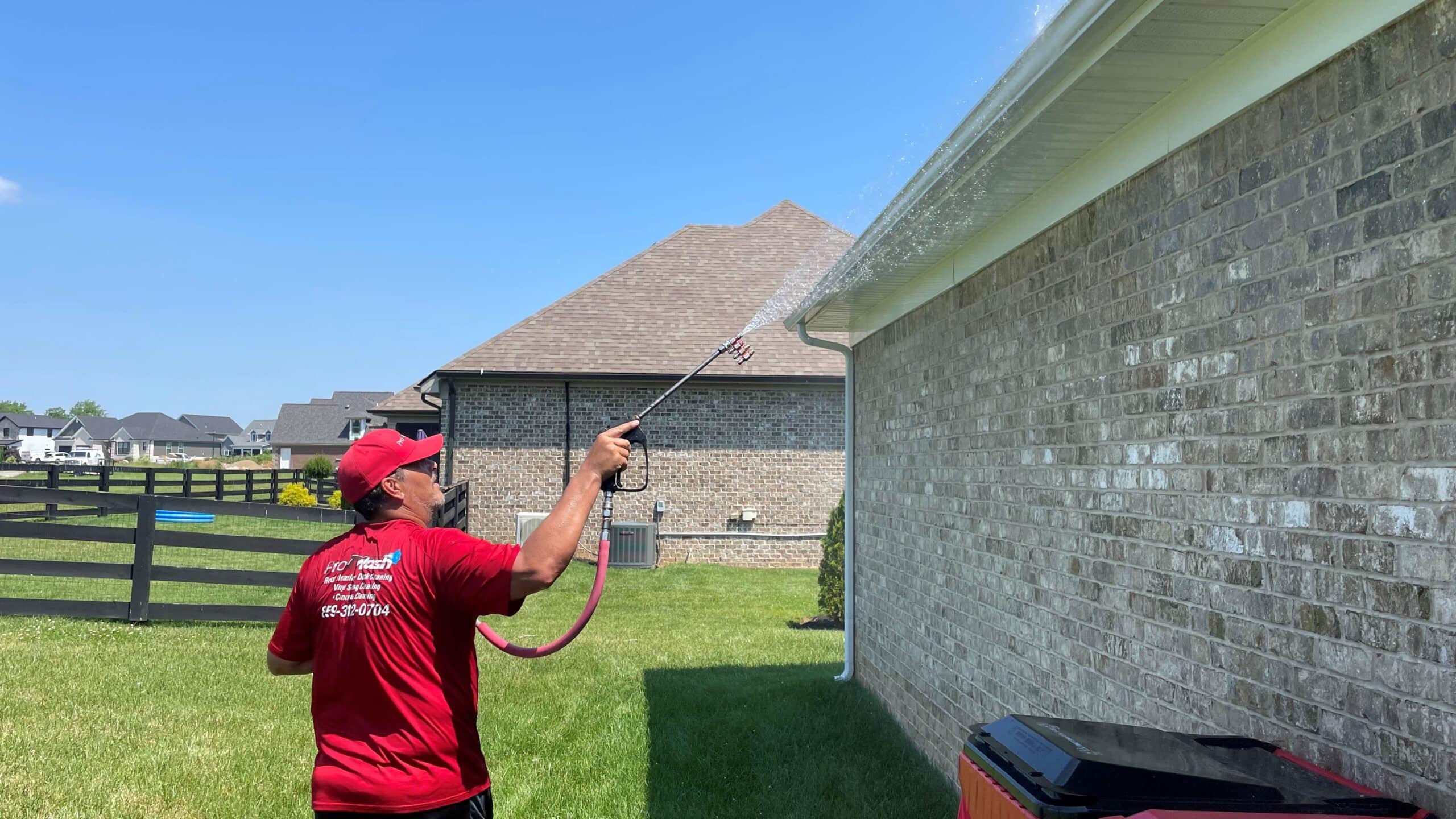What is Soft Washing?
Soft Washing is a cleaning method that uses a low-pressure washing technique, along with a mixture of algaecides, bleach, surfactants, and water, to safely clean exterior surfaces of organic stains, mildew, and algae. soft washing is a less aggressive form of cleaning than power washing or pressure washing and is therefore ideal for cleaning delicate surfaces that could be damaged by high water pressure. soft washing is commonly used to clean roofs, windows, and siding.
How Soft Washing differs from power/pressure washing.
Power or pressure washing is the process of using high water pressure to remove dirt, grime, and other build-up from surfaces. Power washing can be an effective cleaning method, but it can also be very damaging to surfaces if not done correctly. Soft washing uses a low-pressure washing technique that is gentle enough to not damage delicate surfaces, yet still effective at removing organic stains.

Surfaces that can be cleaned with Soft Washing.
- Roofs: soft washing is an effective and safe way to clean roofs of organic stains, mildew, and algae.
- Windows: soft washing can safely clean dirt, grime, and other build-up from windows without damaging the glass.
- Siding: soft washing is an effective way to clean siding without damaging the material.
The benefits of Soft Washing over power washing.
- Soft Washing is a less aggressive form of cleaning than power washing, making it ideal for delicate surfaces that could be damaged by high water pressure.
- Soft Washing uses a mixture of algaecides, bleach, surfactants, and water to safely clean exterior surfaces of organic stains, mildew, and algae.
- Soft Washing is commonly used to clean roofs, windows, and siding - all surfaces that can be easily damaged by power washing.
- The low-pressure washing technique used in soft washing is gentle enough to not damage delicate surfaces, yet still effective at removing organic stains.

How to Soft Wash?
1
Mixing
Begin by mixing the soft washing solution. This will typically be a mixture of water, bleach, algaecide, and surfactant.
Add Wand
Next, attach the soft washing wand to your garden hose.
Apply
Apply the soft washing solution to the surface you wish to clean, being careful not to oversaturate or damage the surface.
Dwell
Allow the soft washing solution to dwell on the surface for 5-10 minutes.
Rinse
Rinse the surface with clean water to remove the soft washing solution.
Repeat
Repeat steps 3-5 as necessary until the surface is clean.
What is the soft washing solution made of?
The soft washing solution is made of a mixture of algaecides, bleach, surfactants, and water. This mixture safely cleans exterior surfaces of organic stains, mildew, and algae. The soft washing solution is also biodegradable and safe for the environment.
Conclusion about Soft Washing:
Soft Washing is a less aggressive form of cleaning than power washing, making it ideal for delicate surfaces that could be damaged by high water pressure. Soft washing uses a mixture of algaecides, bleach, surfactants, and water to safely clean exterior surfaces of organic stains, mildew, and algae. soft washing is commonly used to clean roofs, windows, and siding - all surfaces that can be easily damaged by power washing. The low-pressure washing technique used in soft washing is gentle enough to not damage delicate surfaces, yet still effective at removing organic stains. To soft wash correctly, mix the soft washing solution, attach the wand to your hose, apply the solution to the surface you wish to clean, and allow it to dwell for 5-10 minutes. After soft washing, you will notice a dramatic difference in the appearance of your home’s exterior surfaces!



